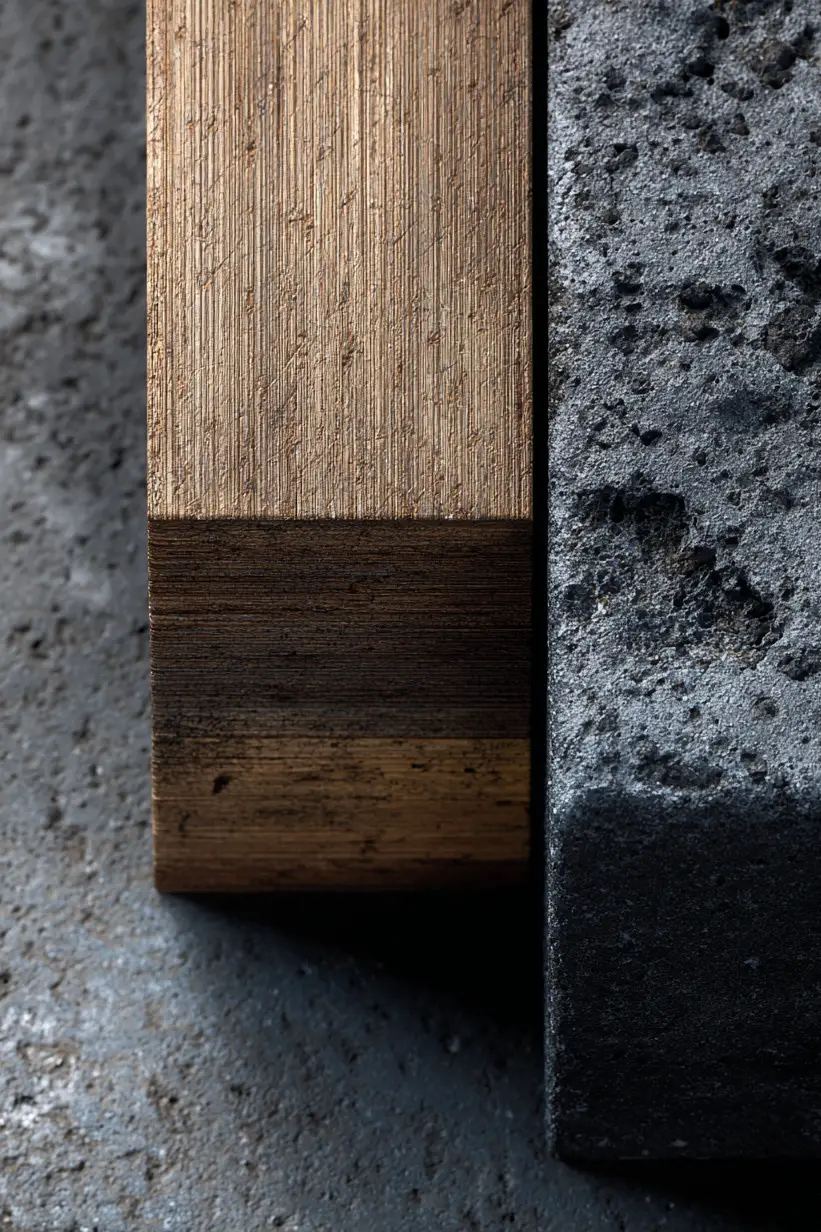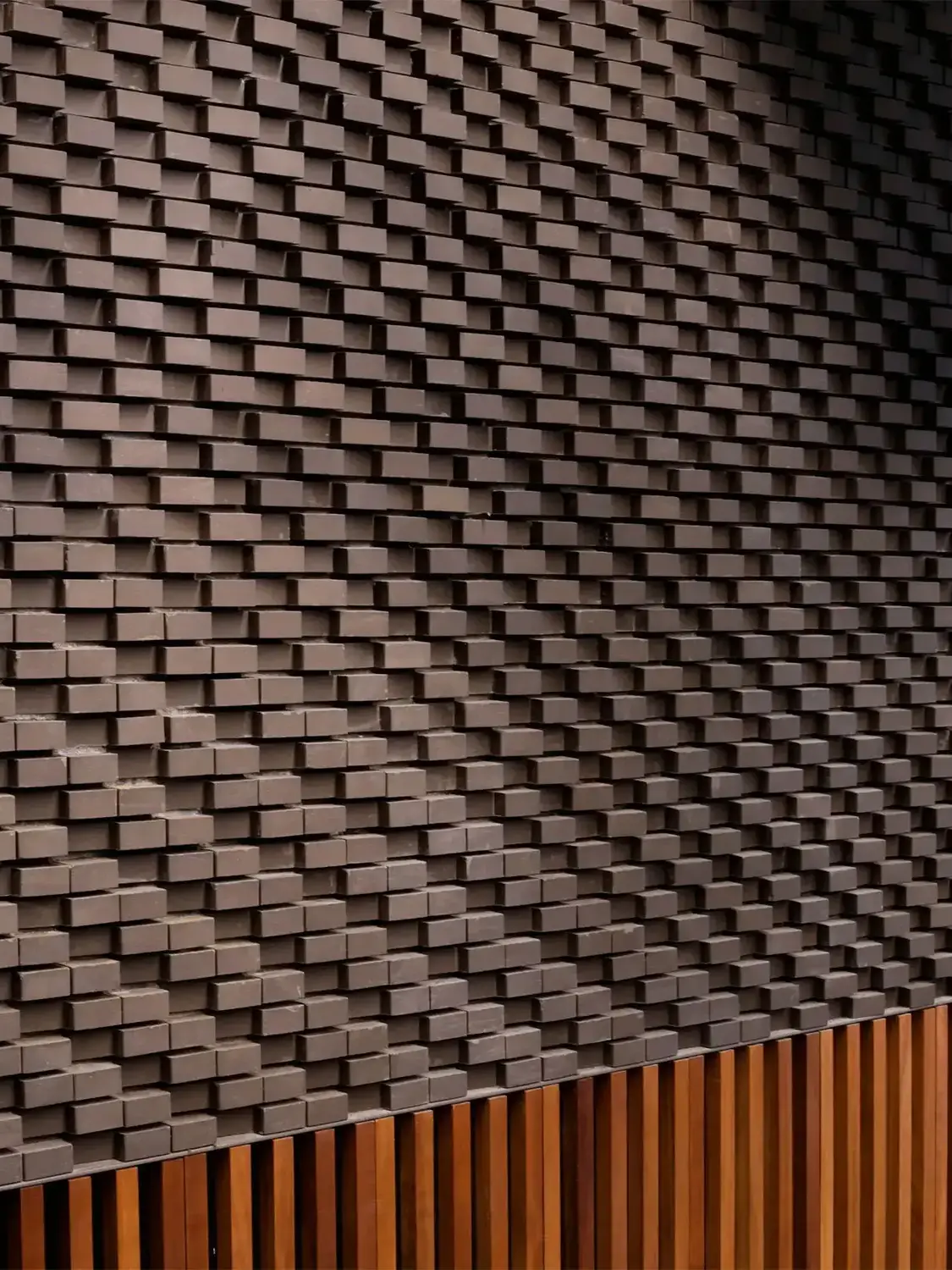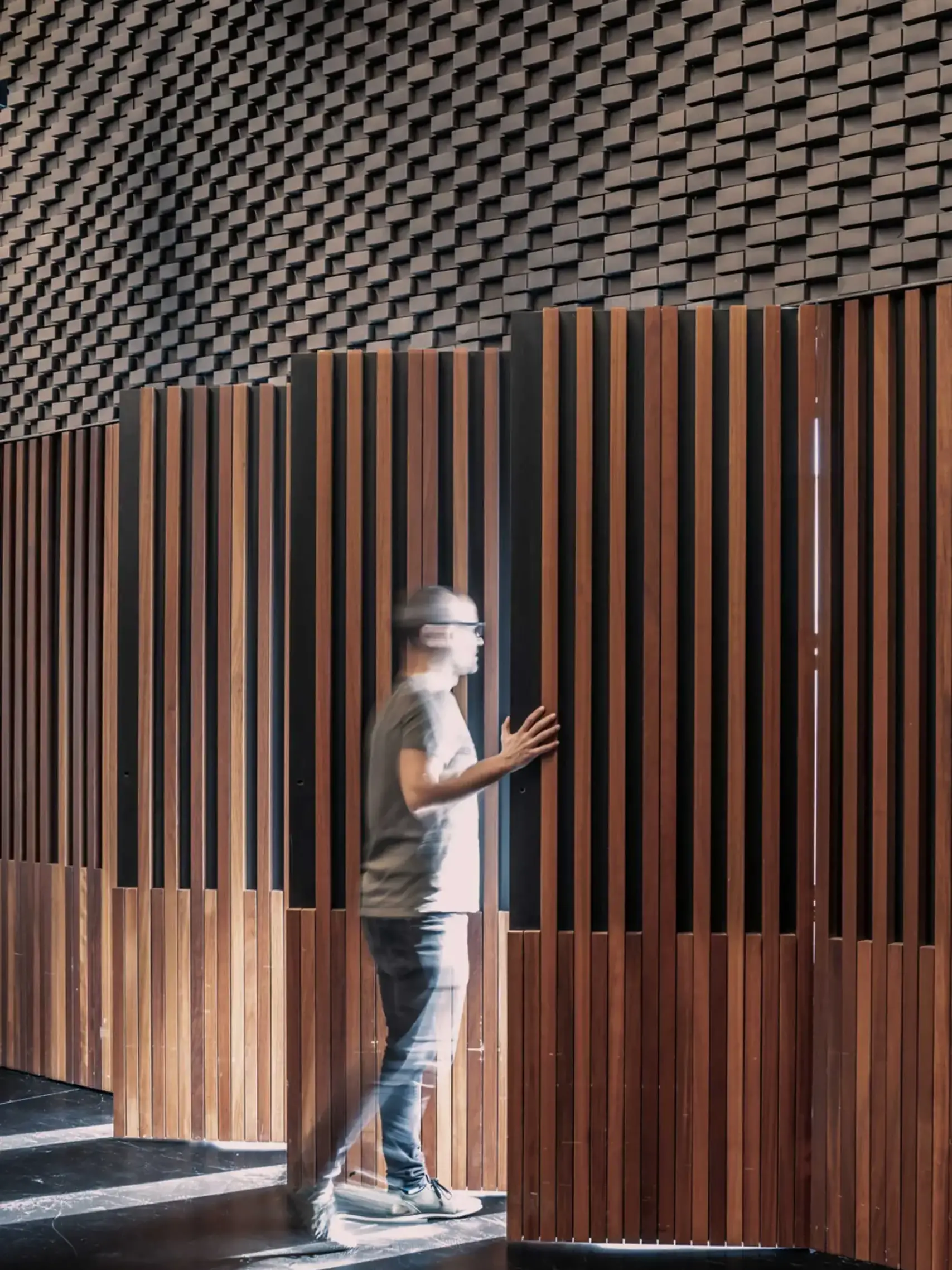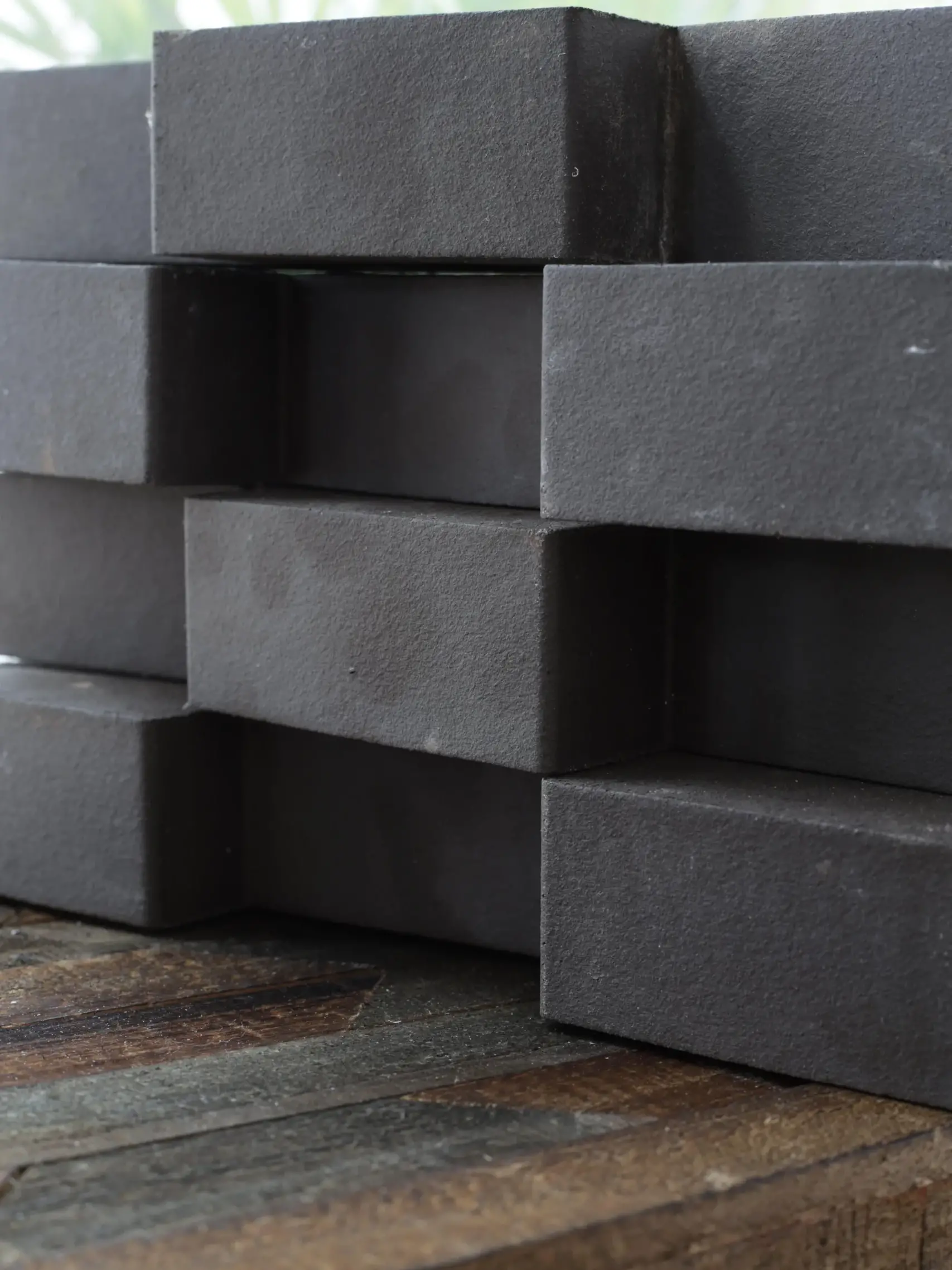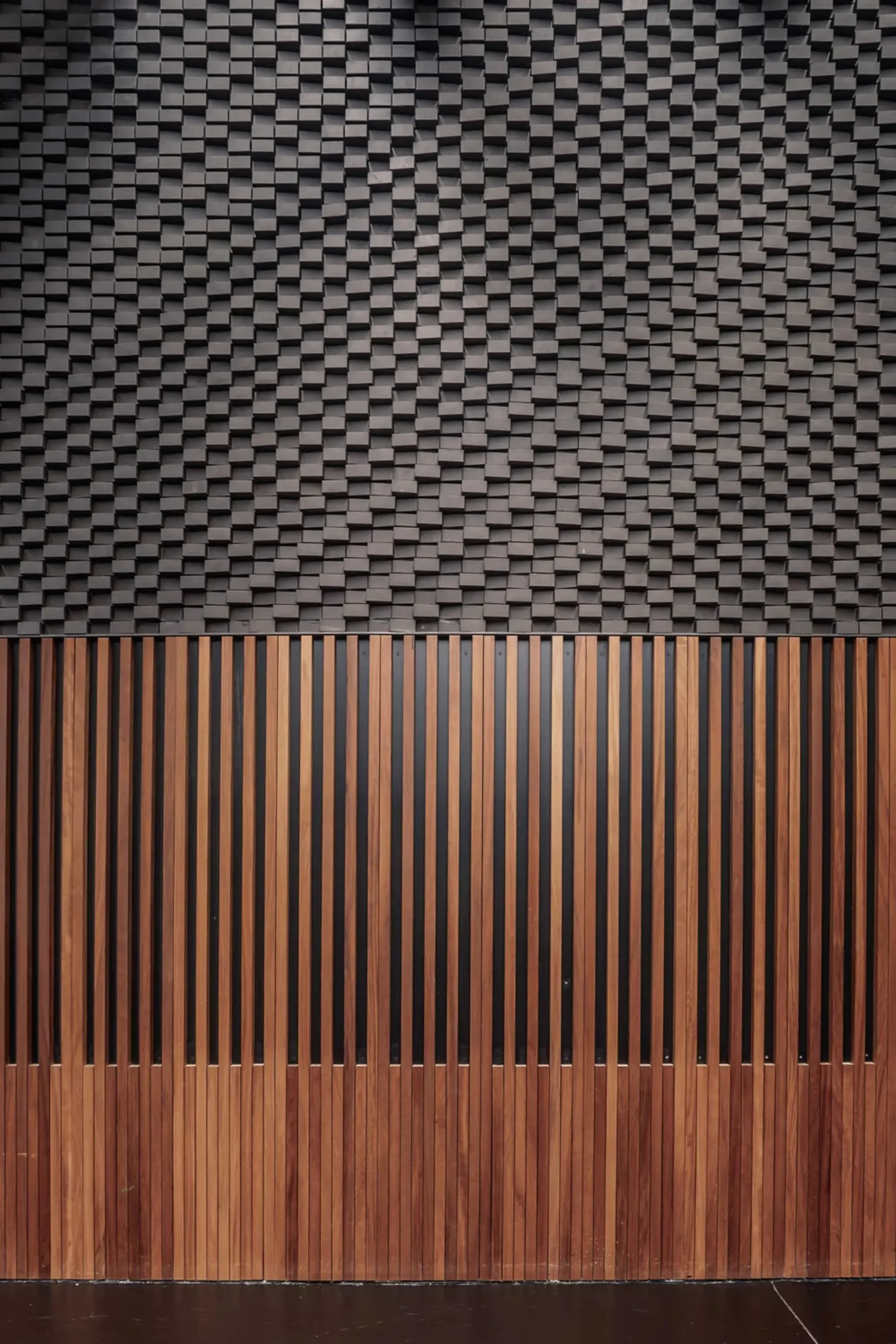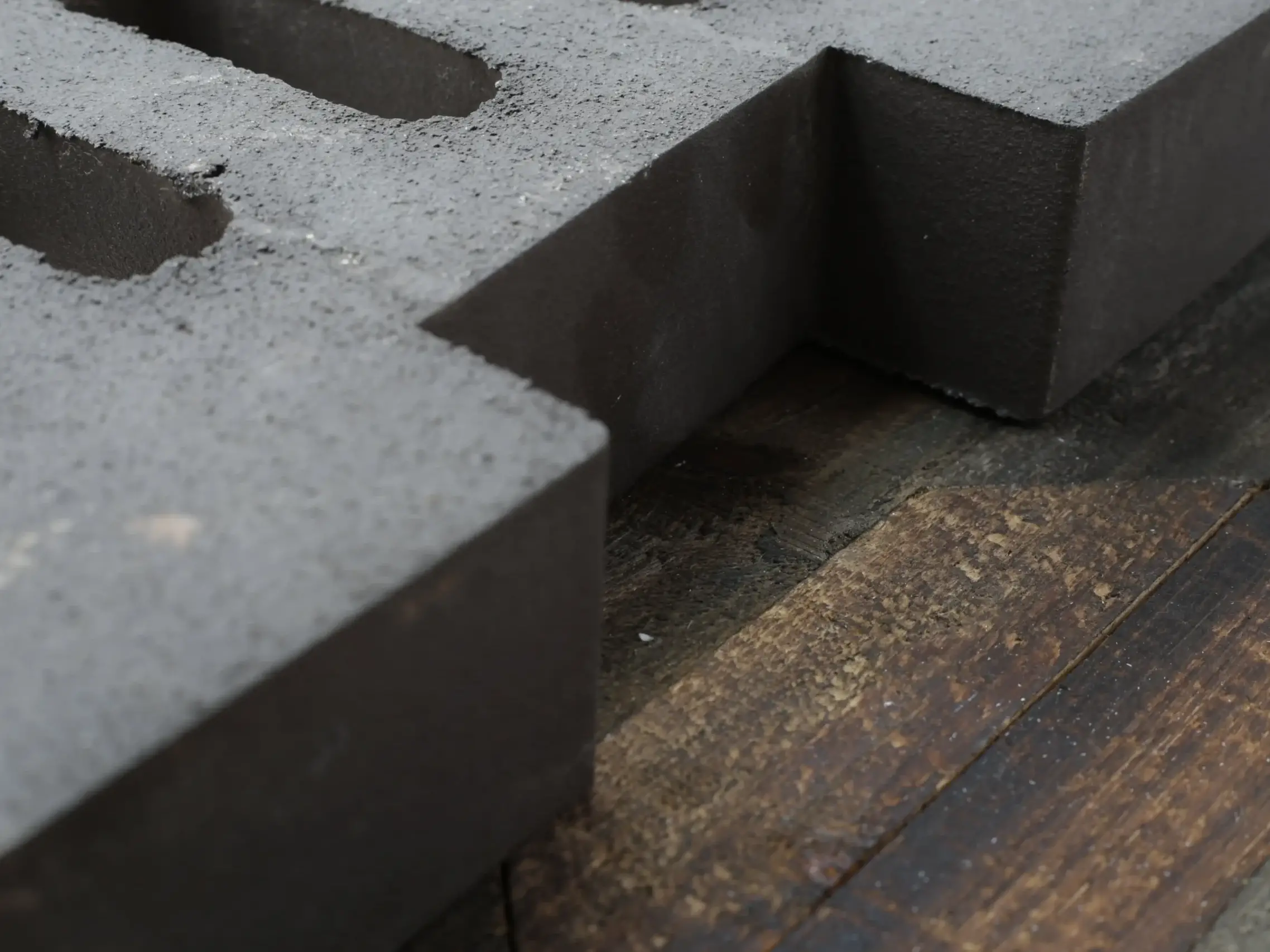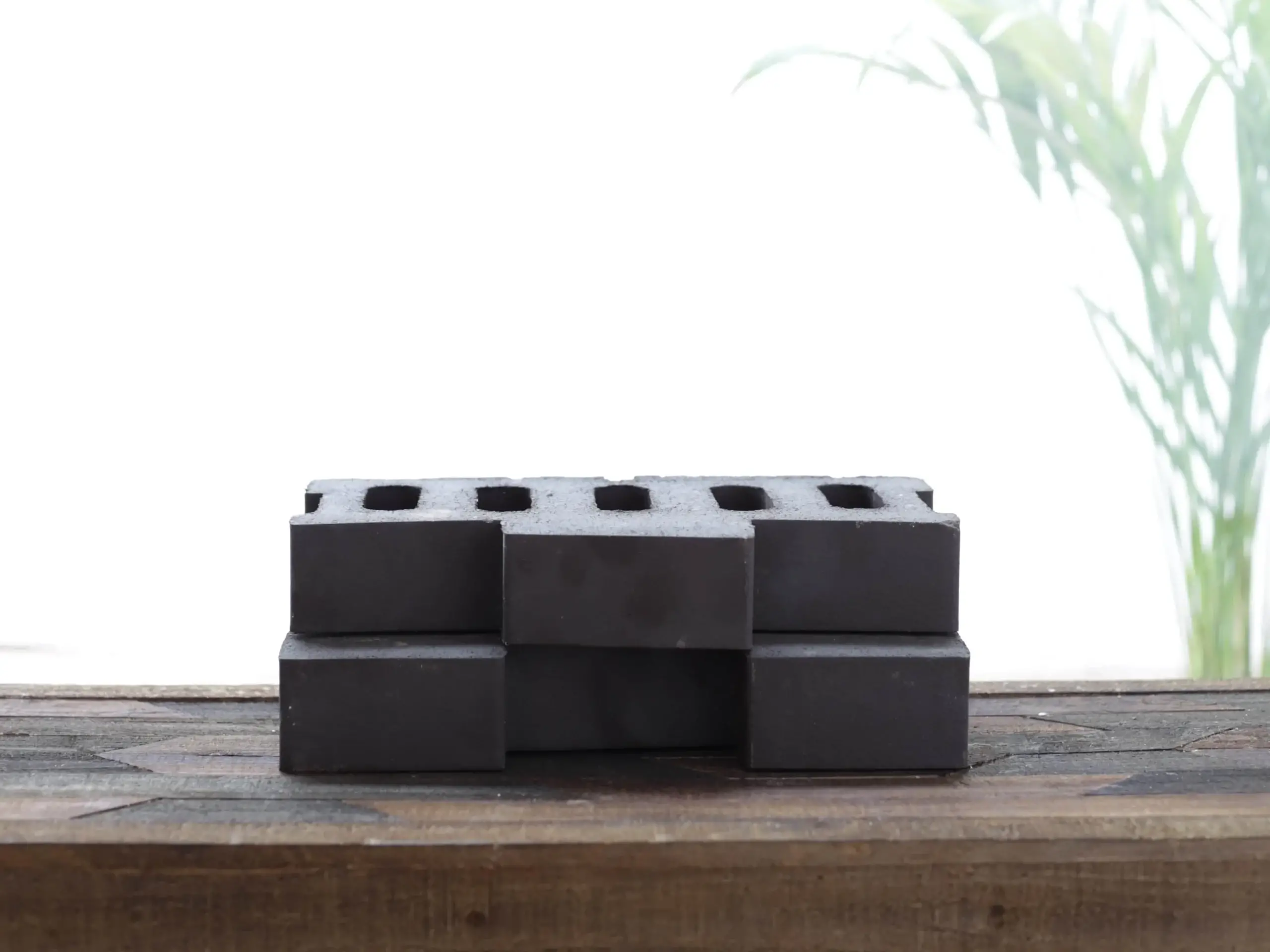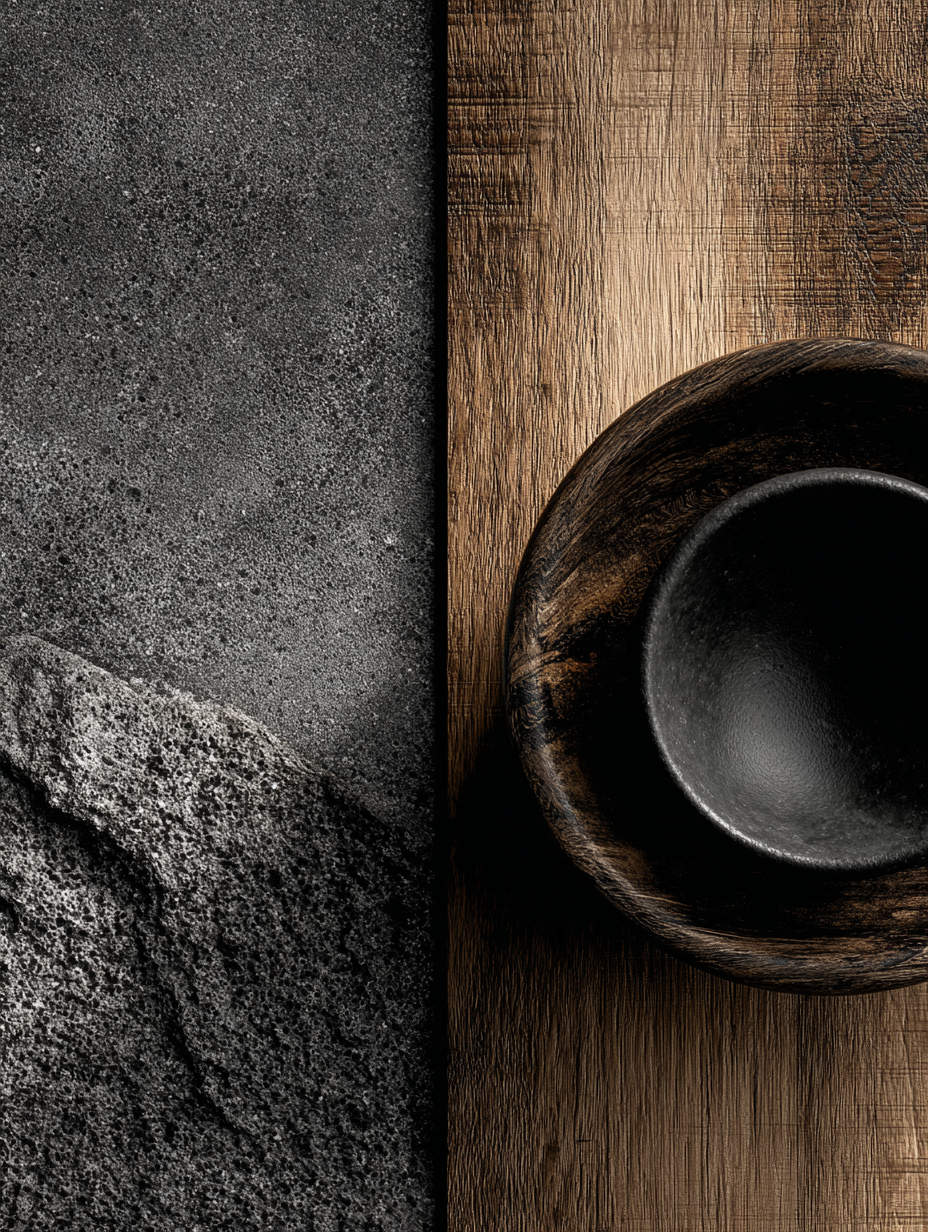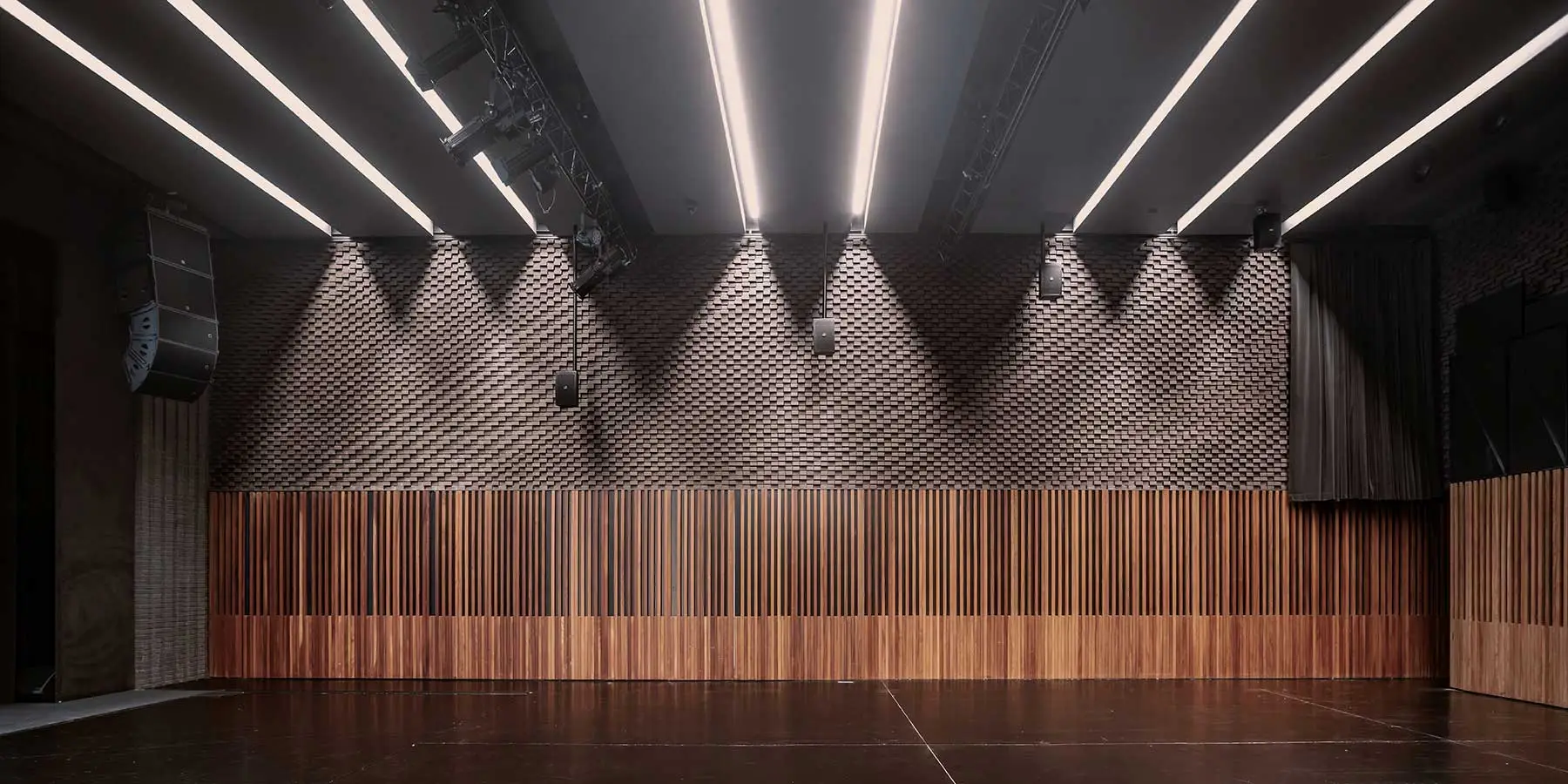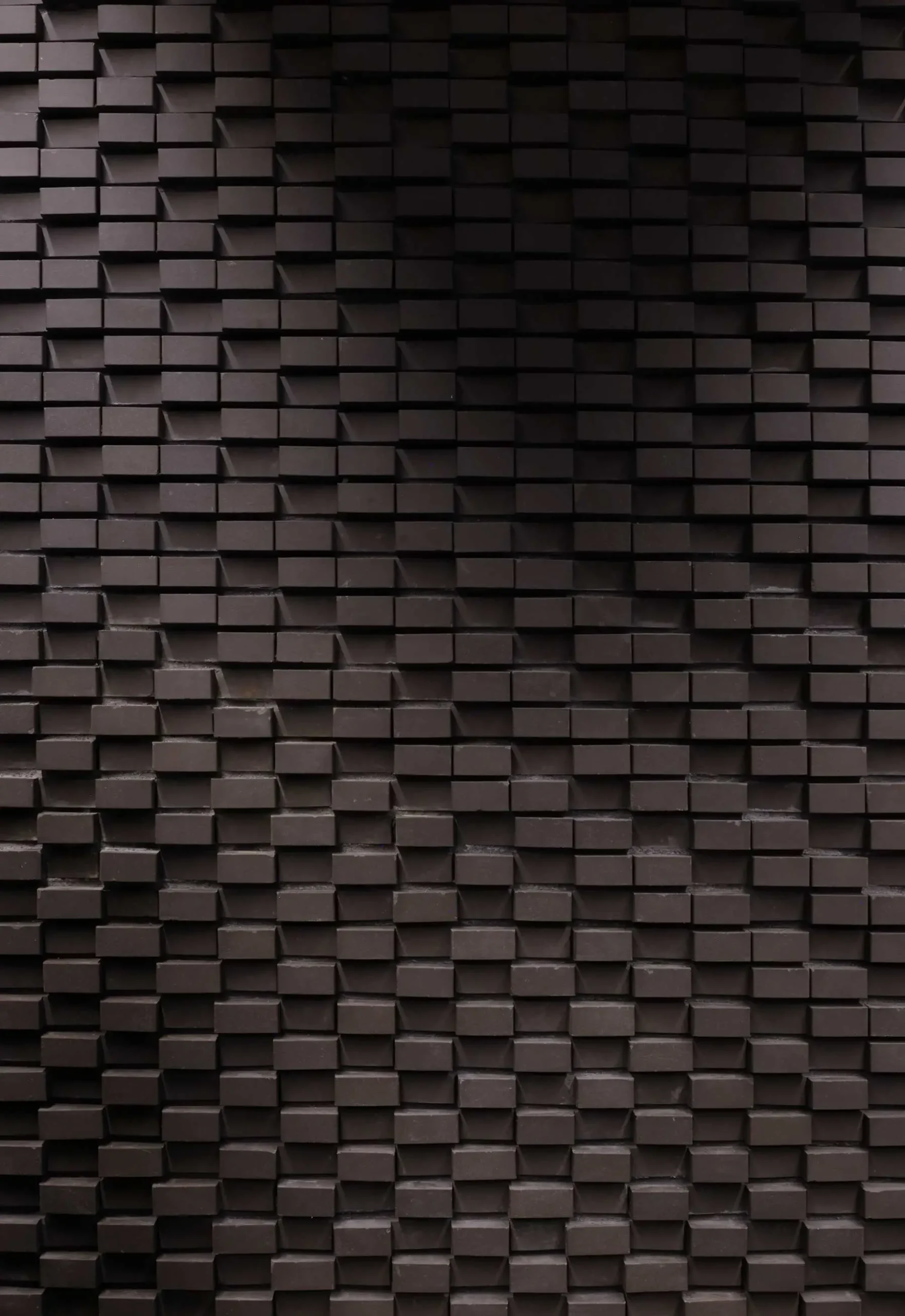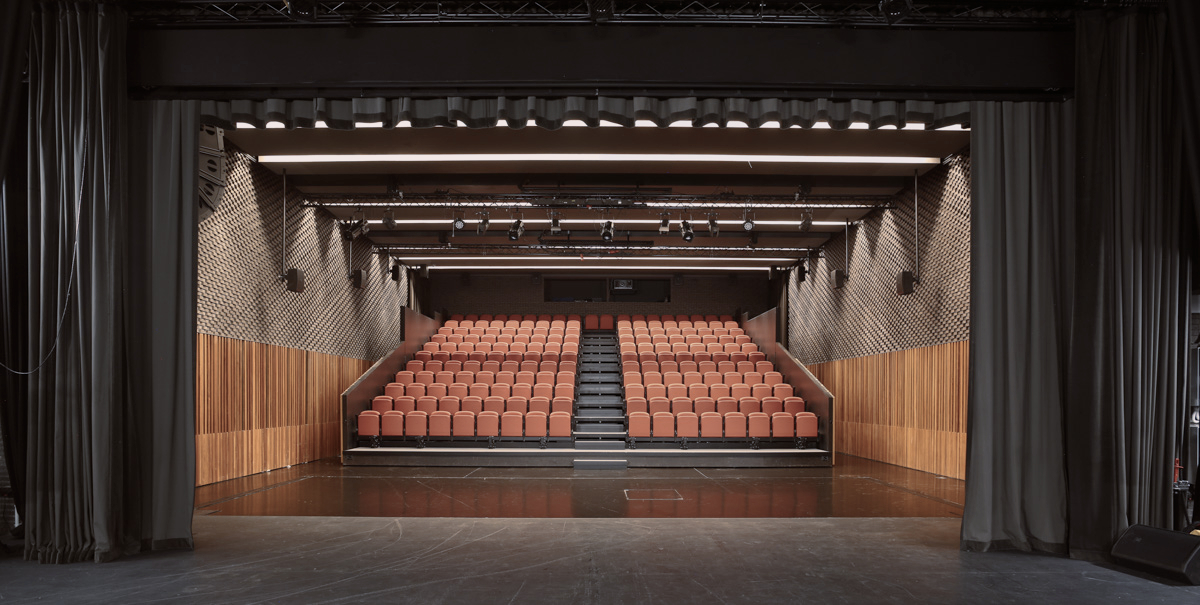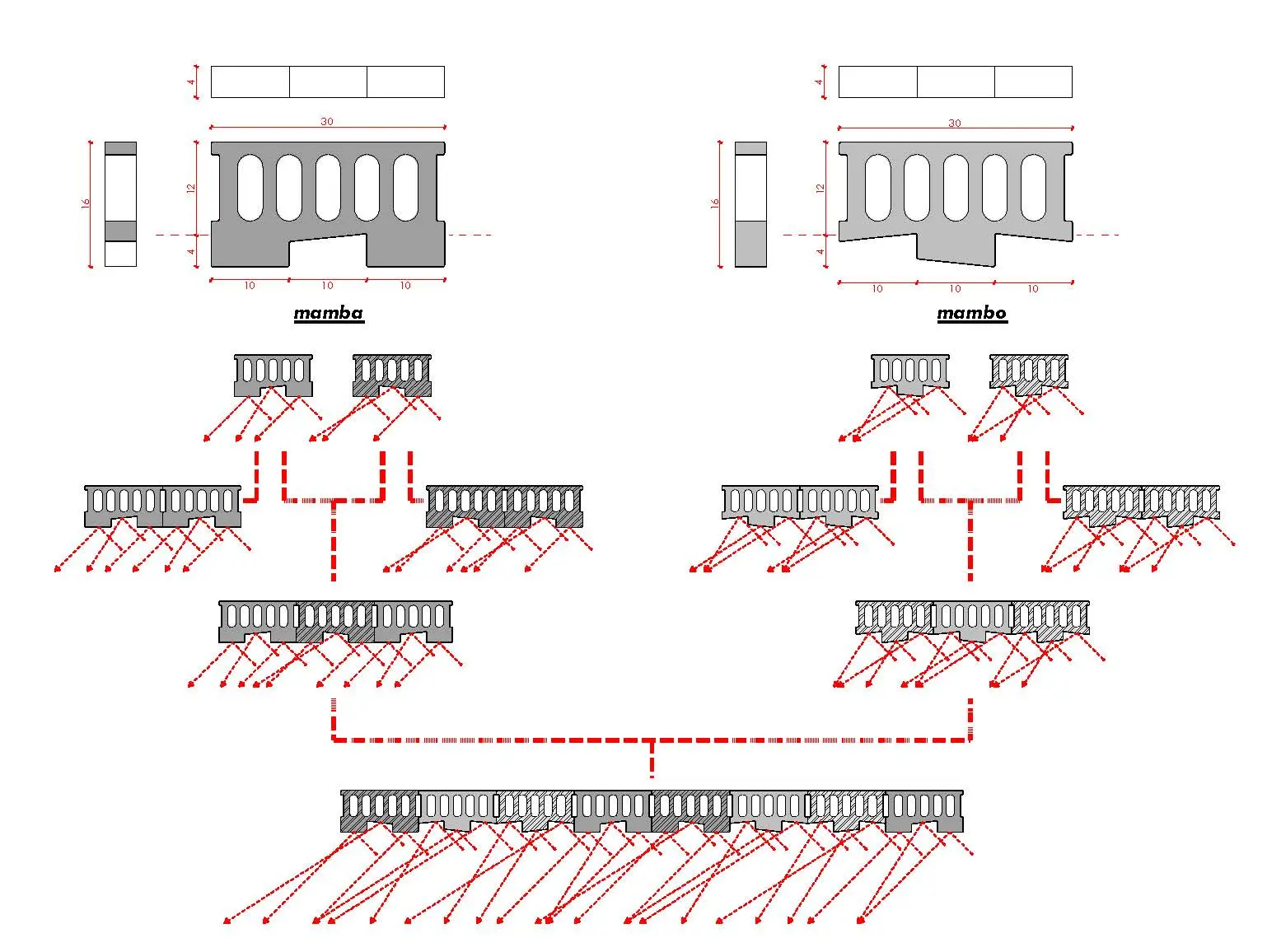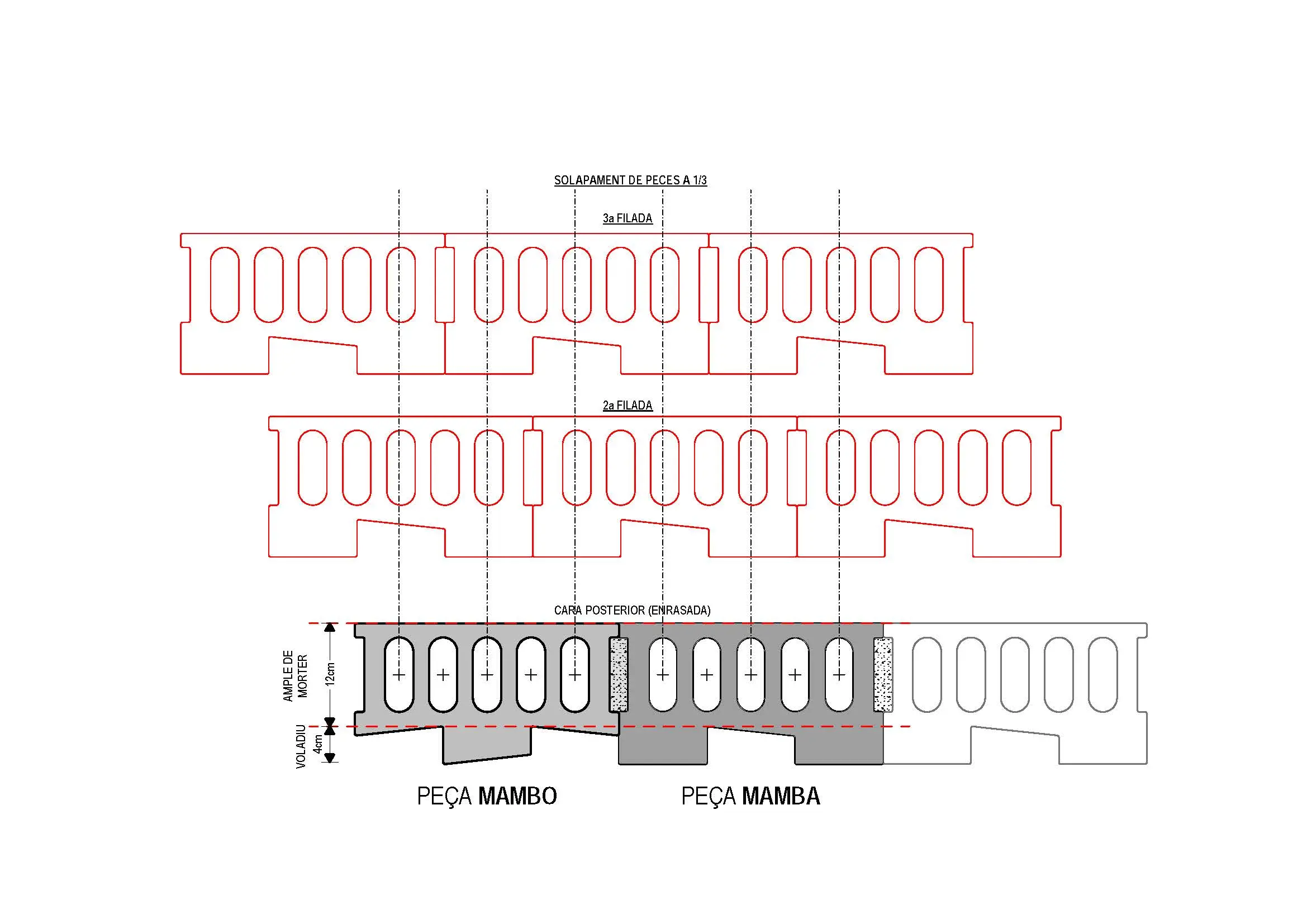Location
Badalona, Barcelona
Category
Design
Photography
Adrià Goula, FEM
Year
2015
In the town of Alella, where the intimate scale of domestic streets meets the ambition of civic architecture, the new Auditorium called for more than a space for gathering. It required a hall that could adapt, transform, and resonate with multiple voices – from orchestral performances to cinema screenings, from chamber music to amplified concerts. At the heart of this challenge lay not only architecture, but acoustics. And from this search emerged Mambo and Mamba, two black ceramic pieces designed for the Auditorium by FEM and crafted with mastery by Ceràmica Cumella.
Mambo and Mamba are more than construction units. They are sculpted ceramics conceived as a skin for sound – a surface that both reflects and absorbs, shaping the acoustic atmosphere of the hall. Together, the two pieces form a dialogue of opposites: convex and concave, absorption and reflection, rhythm and stillness. Their geometry transforms the walls of the auditorium into an instrument in their own right, tuned to serve a polyphonic range of uses.
The principle was clear: a truly polyvalent hall could not rely on a single acoustic profile. Each performance demands its own condition. A symphonic orchestra requires resonance, while cinema demands clarity and control. A live amplified concert thrives in direct reflection, while chamber music benefits from subtle diffusion. To reconcile these needs, the walls had to perform. And so, Mambo and Mamba were born – a ceramic pair capable of sculpting sound.
The tactile contrast between black ceramic and warm wood defines the auditorium’s interior – a dialogue of roughness and refinement, texture and tone.
Diagonal arrangements of the ceramic modules generate a dynamic pattern, scattering sound while enriching the hall with depth and vibration.
Mambo, the “male” piece, is defined by its central protrusion. This geometry creates cavities on the sides, which trap and soften sound waves, ensuring a measured degree of absorption. Mamba, the “female” counterpart, does the opposite: with its broader surface facing outward, it reflects sound efficiently, distributing it across the hall. When combined, the two pieces create a balance, their alternating reliefs producing a surface that scatters sound in multiple directions, reducing echoes and enhancing clarity.
Yet the system’s flexibility goes beyond the duality of the pieces. Orientation adds another layer of variation: each unit can be placed facing upwards or downwards, allowing designers to tune the wall with subtle shifts in reflection and absorption. From this principle emerges an entire language of patterns. Diagonal compositions, alternating rhythms, or gradual transitions can be created simply by arranging the modules differently. In Alella, the lateral walls of the auditorium were composed with this method: closer to the stage, where strong reflections were needed, the layout favoured Mamba; towards the back, absorption increased with Mambo, creating a gentle gradient of acoustic behaviour.
The result is a wall that is neither uniform nor decorative, but performative. It looks like a woven surface, animated by shadow and relief, but it is above all an acoustic device – one that ensures sound travels faithfully from stage to seat. Waves bounce, scatter, and soften, reaching each listener with clarity and without unwanted reverberation. The space becomes polyvalent not by changing equipment, but by embodying versatility in its very walls.
“
With Aina we explored how the smallest module, when crafted with precision, can transform the perception of an entire building.
- POL FEMENIAS (ARCHITECT)
Materially, the choice of black ceramic was deliberate. In the subdued atmosphere of the auditorium, where focus must remain on the stage, the walls recede into shadow. Their presence is felt not as colour, but as texture – a dark field alive with subtle reflections when touched by light. Under stage lighting, the relief of Mambo and Mamba creates abstract highlights, adding depth to the space without distraction. The surfaces absorb excess visibility, while their tactile quality enhances the sense of intimacy and concentration.
The collaboration with Ceràmica Cumella was essential to this achievement. Known internationally for their ability to combine traditional craft with cutting-edge architectural demands, Cumella brought precision and material sensibility to the pieces. The ceramic blocks had to be robust enough to withstand handling and installation, yet precise in geometry to ensure consistent acoustic behaviour. In their hands, clay became an instrument – fired, blackened, and calibrated to serve architecture’s most intangible dimension: sound.
What emerges is a design that is at once rational and poetic. Rational in its technical basis – geometry tuned to scatter and absorb sound – and poetic in its atmospheric expression: a dark ceramic tapestry that wraps the audience in texture and quiet strength. Mambo and Mamba exemplify how material design can shape not only the appearance of architecture but also its invisible qualities, those that touch the body and the senses without being seen.
Earthy hues of wood and mineral depth of ceramic merge into a tactile harmony, defining the character of the auditorium’s interior.
Beyond ornament, the textured geometry of the ceramic wall is a performative surface – diffusing, reflecting, and absorbing sound in multiple directions.
These ceramic pieces reveal a truth about architecture: that even the smallest module can define the character of an entire space. In Alella, the auditorium does not simply contain sound; it curates it, guiding it, softening it, letting it bloom or recede depending on the performance. Mambo and Mamba stand as silent collaborators to musicians, actors, and filmmakers, ensuring that every voice finds its place, every sound its resonance.
In their geometry, we see a dialogue between opposites. In their material, the union of craft and technology. And in their application, a reflection of architecture’s highest aim: to shape environments that serve life in all its variations – here, through the profound and universal medium of sound.
